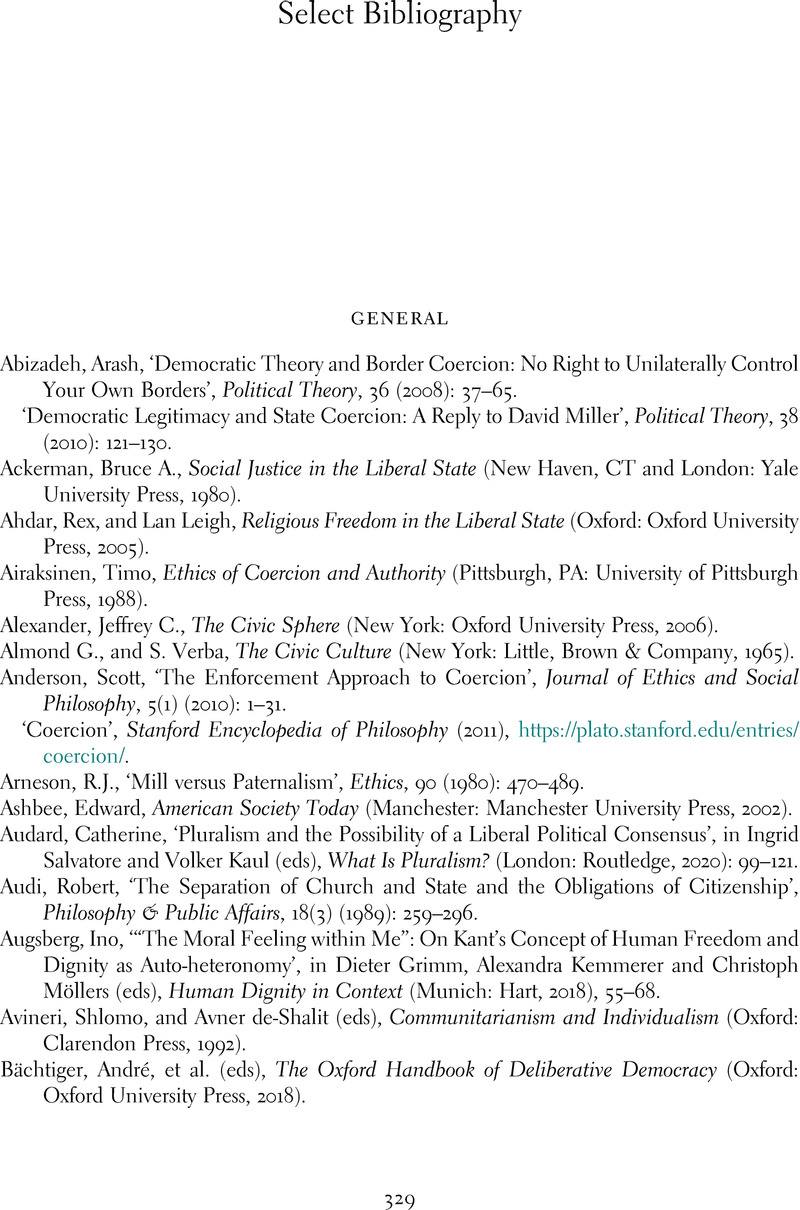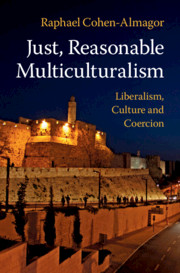Book contents
- Just, Reasonable Multiculturalism
- Just, Reasonable Multiculturalism
- Copyright page
- Dedication
- Contents
- Figures
- Acknowledgements
- Theory of Just, Reasonable Multiculturalism
- Introduction
- Part I Theory
- Part II Interference in Minority Affairs: Physical Harm
- Part III Interference in Minority Affairs: Non-physical Harm
- Part IV Country Case Studies
- Conclusion
- Select Bibliography
- Index
- References
Select Bibliography
Published online by Cambridge University Press: 19 July 2021
- Just, Reasonable Multiculturalism
- Just, Reasonable Multiculturalism
- Copyright page
- Dedication
- Contents
- Figures
- Acknowledgements
- Theory of Just, Reasonable Multiculturalism
- Introduction
- Part I Theory
- Part II Interference in Minority Affairs: Physical Harm
- Part III Interference in Minority Affairs: Non-physical Harm
- Part IV Country Case Studies
- Conclusion
- Select Bibliography
- Index
- References
Summary

- Type
- Chapter
- Information
- Just, Reasonable MulticulturalismLiberalism, Culture and Coercion, pp. 329 - 364Publisher: Cambridge University PressPrint publication year: 2021



